Tucked away in a field deep in the heart of bleak Buchan farmland is a strange, somewhat forlorn-looking building.
Constructed from a mix of brick, concrete, cast and corrugated iron, it could easily be mistaken for a sheep shed or pigsty.
However, this curious edifice once operated as the control shelter for a Second World War decoy airfield.
It controlled lighting that simulated that of an airfield and was designed to lure enemy bombers away from the real airfield at RAF Peterhead, around five miles away.
It’s a damp, dreich, drizzly day when I set out to explore the site with local historian Mark Salt, the founder of RAF Peterhead Heritage Society.
Decades of exposure to the elements
Concerned at its deterioration after 80 years of exposure to the north-east’s harsh environment, Mark set out to find and photograph the remote building before it is lost for ever.
Unless you happen to be driving around Rora Moss, you’d be unlikely to stumble across it. Even then, it’s a ‘blink-and-you-miss-it’ sort of scenario. Luckily, Mark knows exactly where to go.
It’s a short stroll from where we park the car, and a quick hop over a gate.
One entrance to the building is blocked by a mound of earth and a blue wooden door, but the north-west side has an opening, allowing easy access.
I’m glad I’m wearing wellies, as the place is awash with pools of muddy water.
“It’s grim today but imagine being some of the RAF guys, hanging about here for hours on end, feeling the cold and damp seep into their bones,” Mark muses.
“They had a small stove, or burner, inside. Staff would’ve stood there, trying to keep warm during harsh winter nights while waiting for the call to action.”
Fascinating features
It’s pretty dark and dingy inside, and I splutter through cattle, or perhaps sheep, manure in my mission to fully explore every nook and cranny.
Mark, meanwhile, is content to stand at the entrance, pointing out fascinating features.
“That’s cast iron steel on the roof,” he says. “That would’ve been a rare commodity in the 1940s, as it was used for building tanks, aircraft and parts of ships.”
Two concrete slabs are all that remain of the base upon which the generator stood that once powered lights to the fake runway, Mark tells me.
I also spot holes in the walls through which, apparently, various power cables and an exhaust would’ve run.
Another raised concrete plinth by the doorway would have acted as the base for a stove.
Only intended to be used at night
The fake site was only meant to be used at night to distract the crews of enemy aircraft from bombing their intended targets – the nearby airfield or local targets of interest – which would of course be blacked out.
“In the event of enemy air activity, RAF Peterhead personnel would call the decoy site asking staff to switch on the lights for a fake runway,” Mark explains.
“Once the distracted enemy crew saw the fake lights, and started heading towards them, the RAF personnel would switch them off.
“The hope was that the enemy aircraft would stay the course and still drop their bombs on the vast, open expanse of Rora Moss.”
Decoy airfield is quite rare
While the fake lights and generator housed inside the building have long gone, it’s well worth a look.
I’m keen to know whether the decoy site was ever actually attacked during RAF Peterhead’s operation from 1941 to 1945.
Mark says that while there were a number of recorded enemy raids on the north-east throughout the war, it’s unknown whether Rora Moss was hit.
“Historical war ministry files don’t reflect any enemy action on Rora Moss,” he elaborates.
“There was only one recorded ‘surprise’ attack on the airfield, on the morning of November 30 1941.
“A lone enemy raider flew north to south over the airfield, dropping a stick of bombs, killing one officer, injuring three airmen, damaging a Spitfire then shooting a car on the Cruden Bay Road.”
The decoy airfield is quite a rarity in Aberdeenshire. Mark says while “a very small number” existed within the region, this is the only one he’s visited so far.
“They’re more common throughout other parts of the UK, but it’s good to know that an example still exists locally after all this time,” he adds.
Years of painstaking research
Mark is also a member of Buchan Aero Club, based at Longside airfield – which was used as an RAF base in the Second World War, with Spitfires taking off for battle.
He’s spent years painstakingly researching the area’s war history and is in the process of collecting vast amounts of war memorabilia for a museum in the club’s headquarters.
There’s no official opening date for this quite yet, but I’m lucky enough to be treated to a sneak peek of the facility.
I won’t lie – I’m blown away. The huge space is filled with photographs, newspaper cuttings, scale model aircraft – and the cracked canopy of a Spitfire. This has been donated by a Moray-based family who were using it as a cloche to grow tomatoes!
There’s also the nose of a Mosquito aircraft which, latterly, was being used on a farm in Banff to feed sheep and cattle.
Another fascinating object is an RAF Peterhead kitbag found in a skip.
“This is the tip of the iceberg,” says Mark. “I’m still researching, taking donations and working on stuff at home.”
- See the RAF Peterhead Heritage Society Facebook page for more information.
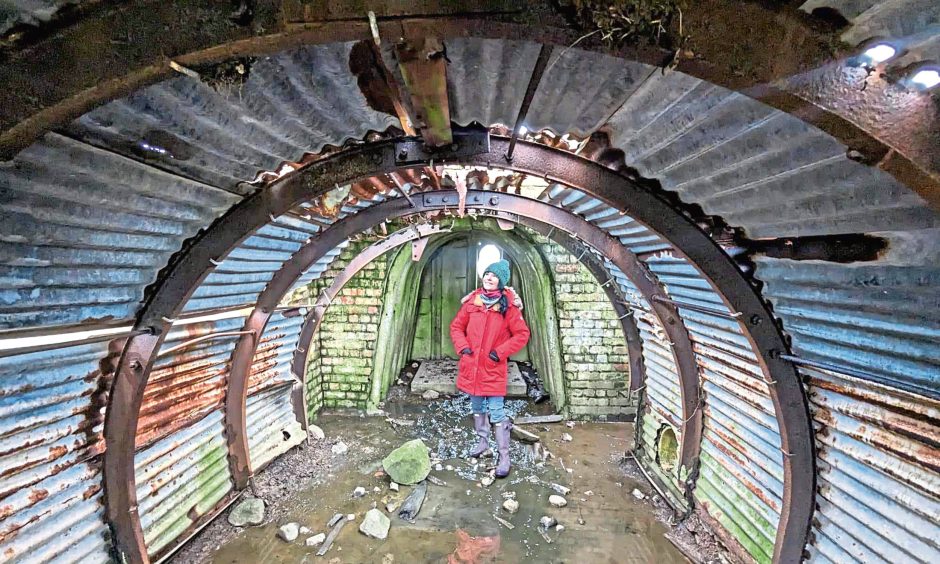
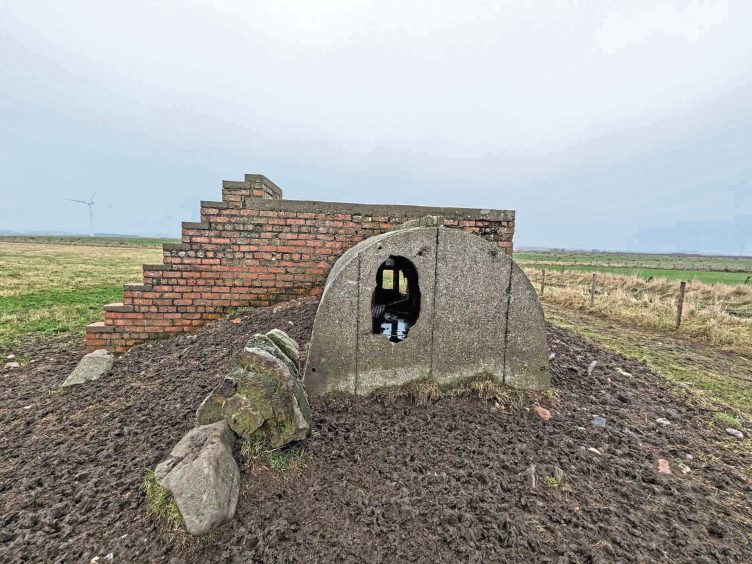
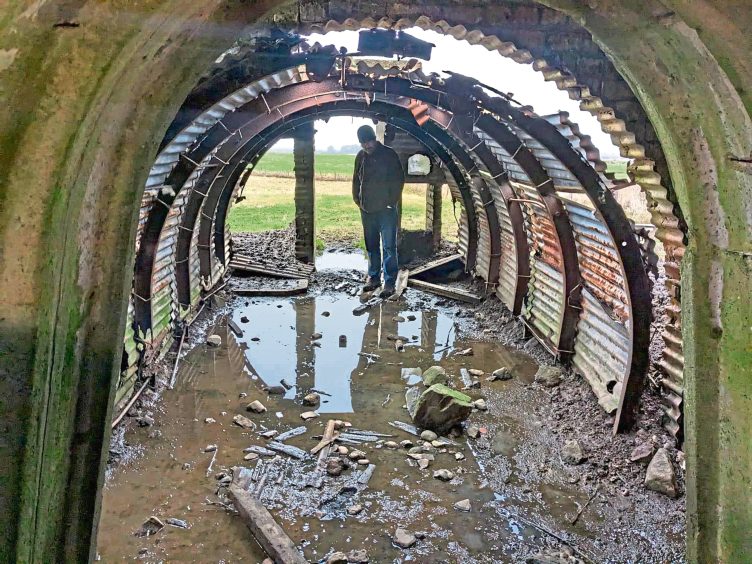
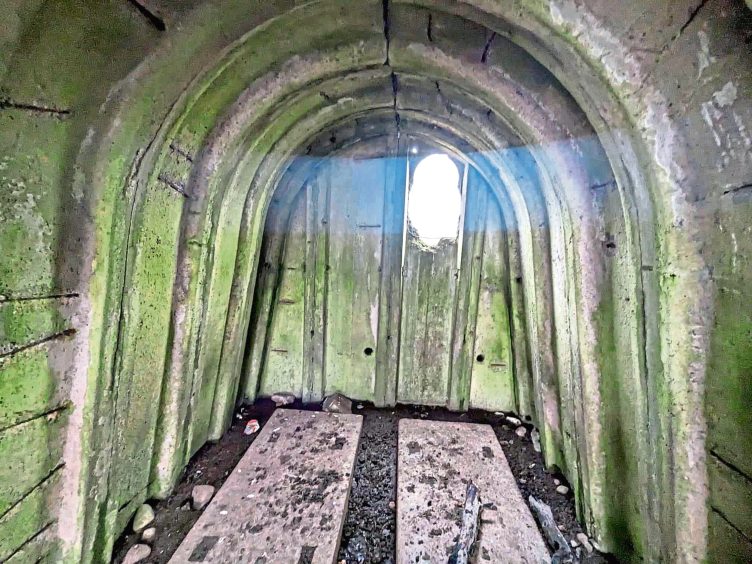
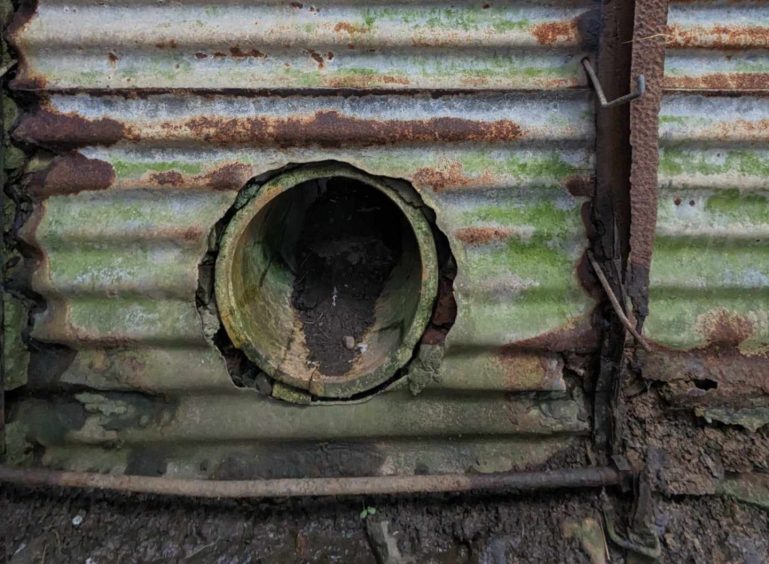

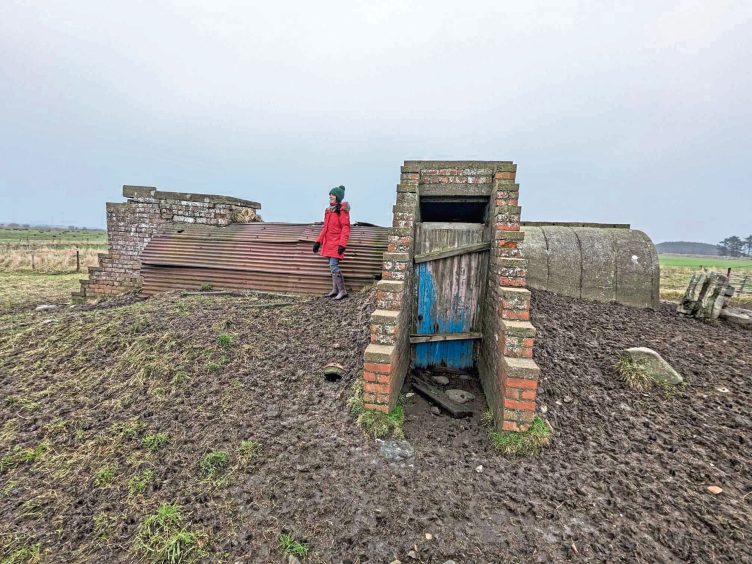

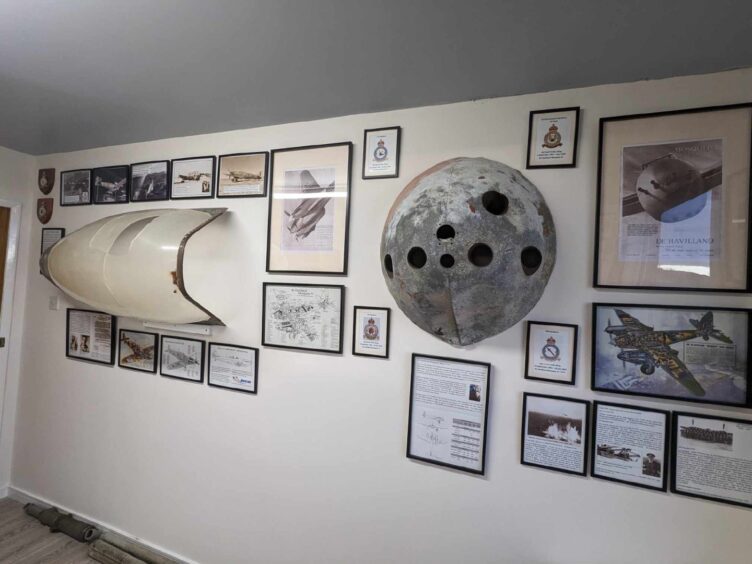
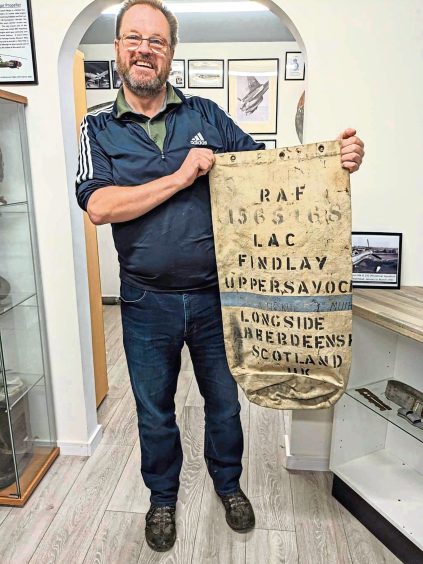










Conversation